
The swift fox is a small light orange-tan fox around the size of a domestic cat found in the western grasslands of North America, such as Montana, Colorado, New Mexico, Kansas, Oklahoma and Texas. It also lives in southern Manitoba, Saskatchewan and Alberta in Canada, where it was previously extirpated. It is closely related to the kit fox and some mammalogists classify them as conspecific. However, molecular systematics imply that the two species are distinct. Interbreeding between the two species does occur where their ranges overlap, but this hybridization is quite restricted in scope.

The giant otter shrew is a semiaquatic, carnivorous afrotherian mammal. It is found in the main rainforest block of central Africa from Nigeria to Zambia, with a few isolated populations in Kenya and Uganda. It lives in streams, wetlands and slow flowing larger rivers. It is the only species in the genus Potamogale. Otter shrews are most closely related to the tenrecs of Madagascar.

Ornithomimus is a genus of ornithomimid theropod dinosaurs from the Campanian and Maastrichtian ages of Late Cretaceous Western North America. Ornithomimus was a swift, bipedal dinosaur which fossil evidence indicates was covered in feathers and equipped with a small toothless beak that may indicate an omnivorous diet. It is usually classified into two species: the type species, Ornithomimus velox, and a referred species, Ornithomimus edmontonicus. O. velox was named in 1890 by Othniel Charles Marsh on the basis of a foot and partial hand from the Denver Formation of Colorado. Another seventeen species have been named since then, though almost all of them have been subsequently assigned to new genera or shown to be not directly related to Ornithomimus velox. The best material of species still considered part of the genus has been found in Alberta, representing the species O. edmontonicus, known from several skeletons from the Horseshoe Canyon Formation. Additional species and specimens from other formations are sometimes classified as Ornithomimus, such as Ornithomimus samueli from the earlier Dinosaur Park Formation.

The whitenose shark is a species of shark of the family Carcharhinidae. The only member of the genus Nasolamia, it is found in the tropical waters of the eastern Pacific Ocean between latitudes 31° N and 18° S, between depths of 15 to 200 m. It can grow up to a length of 1.5 m. The whitenose shark is viviparous, with 5 young in a litter, and a birth size around 53 cm.

The Vauxhall Velox is a six-cylinder executive car which was produced by Vauxhall from 1948 to 1965. The Velox was a large family car, directly competing in the UK with the contemporary six-cylinder Ford Zephyr, and to a slightly lesser extent, with the A90, A95, and A110 Austin Westminster models.
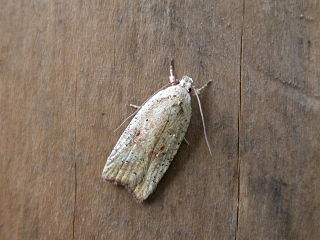
The gorse tip moth is a smallish moth species of the family Depressariidae.

Depressaria is a genus of moths in the superfamily Gelechioidea. It is the type genus of subfamily Depressariinae, which is often – particularly in older treatments – considered a distinct family Depressariidae or included in the Elachistidae, but actually seems to belong in the Oecophoridae.
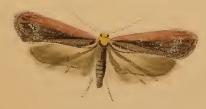
Blunt’s flat-body or purple carrot-seed moth is a moth of the family Depressariidae. It is found in most of Europe. It is also found in the Near East, North Africa, the eastern part of the Palearctic realm and since 2009 in North America. In the former USSR, it is distributed in the entire European part except for the Far North. It is also found in the northern Caucasus and Transcaucasia, in Kazakhstan, Central Asia, the south of Siberia, and the Russian Far East. It is an introduced species in North America, where it has been reported from Québec and Ontario.

Depressaria albipunctella is a moth of the family Depressariidae. It is found in most of Europe, as well as in Libya.

Depressaria chaerophylli is a moth of the family Depressariidae.

Depressaria libanotidella is a moth of the family Depressariidae. It is found in most of Europe, except Great Britain, Ireland, the Benelux, Portugal, Norway, Poland, most of the Balkan Peninsula and most of the Baltic region.
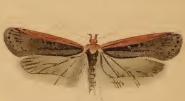
Depressaria pimpinellae is a moth of the family Depressariidae. It is found in most of Europe, except Ireland, Portugal and most of the Balkan Peninsula.

Depressaria artemisiae is a moth of the family Depressariidae. It is found in most of Europe, except Ireland, Great Britain, the Netherlands, Belgium, the Iberian Peninsula and most of the Balkan Peninsula. It is also found in North America.

Depressaria badiella is a moth of the family Depressariidae. It is found in most of Europe, Libya, the Caucasus and Mongolia.
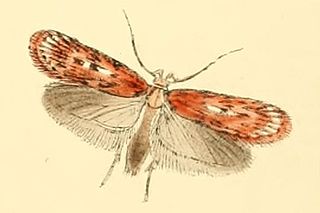
Depressaria pulcherrimella is a moth of the family Depressariidae. It is found in most of Europe, except the Balkan Peninsula.

Depressaria sordidatella is a moth of the family Depressariidae. It is found in most of Europe, except Ireland, Portugal, Belgium, Ukraine and most of the Balkan Peninsula.

The parsnip moth or parsnip webworm is a moth of the family Depressariidae. It is found in most of Europe, except Portugal and most of the Balkan Peninsula. This species has also been introduced into New Zealand.
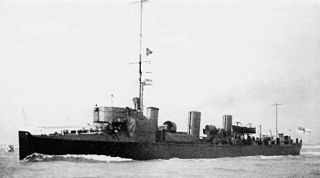
HMS Velox was a turbine-powered torpedo boat destroyer of the British Royal Navy built on speculation in 1901-04 by engineering firm Parsons Marine, with the hull subcontracted to Hawthorn Leslie and Company at Hebburn on the River Tyne. Velox served in the First World War, being sunk by striking a mine in 1915.












